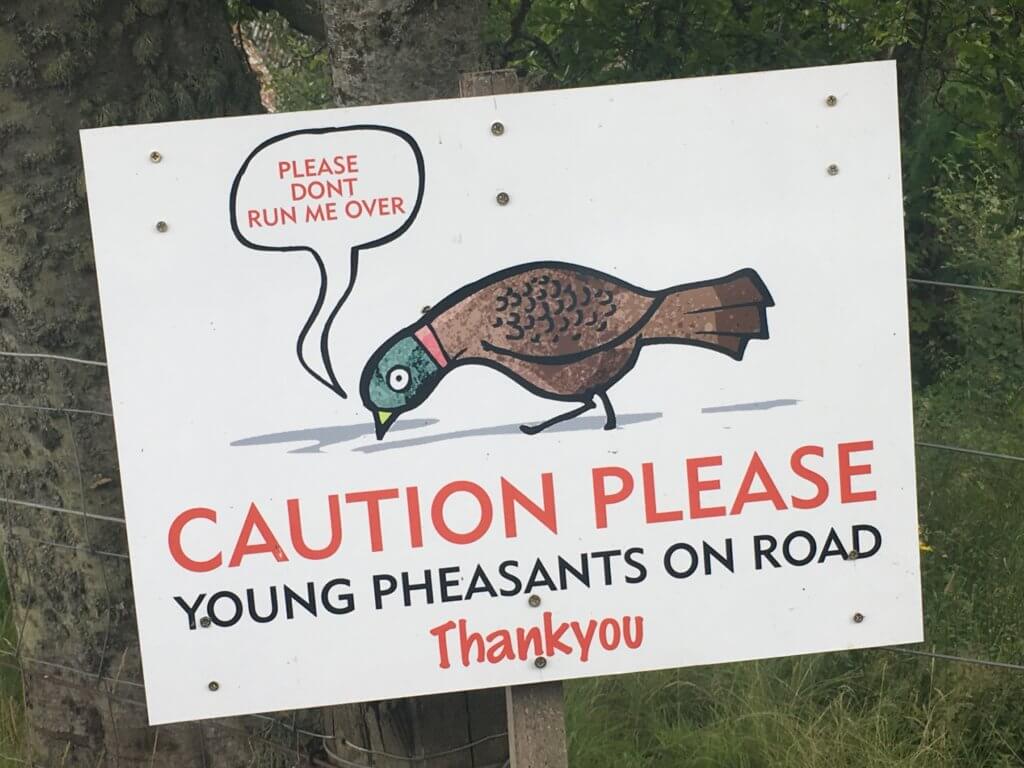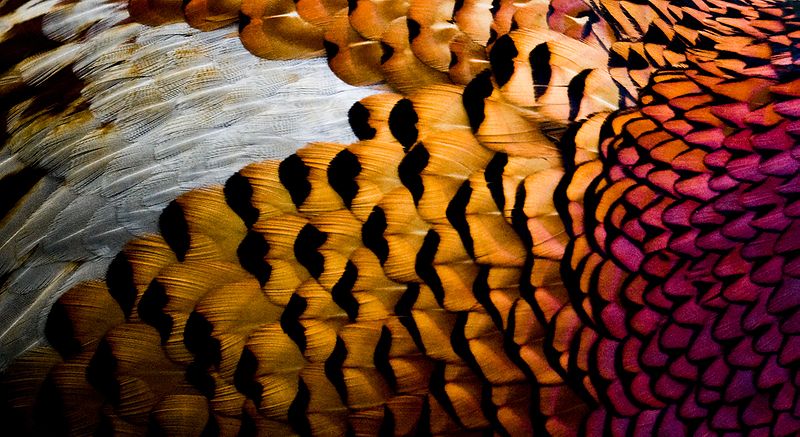
Today would be the first day of the Pheasant shooting season were it not a Sunday – so in practice it starts tomorrow.
I hope you have all been driving carefully to protect the 40 million or so non-native Pheasants which have been released into the UK countryside so that c25 million of them can be shot.
Scenes from a Pheasant-rearing facility.
And scenes of discarded Pheasants after they have been shot.
Those released Pheasants make up most of the biomass of ‘wild’ birds in the UK at this time of year.
Over 5 million Pheasants poults (and around 2 million Red-legged Partridges) are imported into the UK from the continent each year.
Most Pheasants shot in the UK will be shot with lead shot and the meat will have high lead levels – this has led charities which distribute food to the poor to be very careful about taking game meat on advice from the Food Standards Agency.
See this guest blog by former shooter Ed Hutchings.

[registration_form]
Somewhat offtopic, but if pheasant shooting ceased right now (I know, not likely) would the pheasant population persist? Is it sufficiently embedded to be self sustaining? I’ve been led to think so, but I’ve never got an unequivocal straight answer. Does anyone have a link to any research or articles on that one? Just to know for sure?
..and you should ask the same question about the release of red-legged partridges in Scotland – Im seeing increasing numbers wandering about roads in Dumfriesshire. I think its scandalous that the government’s nature conservation agency havent prevented this – they get released on the edges of grouse moors, as well as low ground shoots…from Wikipedia – “As it is a mediterranean species, it thrives in hot, dry areas with sandy soil.”…Not exactly a common ecosystem anywhere in Scotland?
A very interesting point, Random, and one I’ve pondered myself particularly in light of the recent UK extinction of Lady Amherst’s Pheasant and the decline towards extinction of Golden Pheasant (with perhaps only one locality still maintaining numbers and at least the suspicion that this is only because of continued, illegal, releases). I suspect that Pheasants would turn out to be self-sustaining in the UK (albeit at a much lower population level) but that’s only anecdote based on a perception that populations that aren’t near current release sites are surviving and probably expanding. However, with no ringing program, I’ve no idea how far some of the more adventurous released Pheasants might disperse and these perceived self-sustaining populations could well be topped up by recently released birds from elsewhere. Finding any area suitably ‘quarantined’ geographically from releases (say an island where shooting/releases no longer takes place) might provide clues, I don’t think their can be many large geographical areas within the UK where pheasant release was once prevalent but is no longer so.
Not an awful lot to go on but this might give a few ideas where to look for a test case.
Click on ‘maps’ then go to ‘Distribution change’
(Common) Pheasant;
https://app.bto.org/mapstore/StoreServlet?id=133
Compare with Lady Amherst’s Pheasant (last release that I’ve heard of was around Woburn in the 1980s and rumours of isolated ones after that);
https://app.bto.org/mapstore/StoreServlet?id=135
and Golden Pheasant (again, releases in north Norfolk the 1980s, at least one bird recently released at Brownsea Island, Dorset, and an ongoing suspicion, due to a lack of confirmed breeding/immature birds being sighted, that the larger population in the Suffolk Brecks might still be being augmented);
https://app.bto.org/mapstore/StoreServlet?id=134
Shows the quality of some of the trolls that occasionally come to lurk on here; getting a ‘dislike’ for putting up some links to distribution maps! Cartography is, clearly, one slippery step away from Satanism!
The Romans were the first to bring them to Britain as a cage bird to eat. There is a lovely mosaic in the British Museum from Cirencester of a hen pheasant. There was then a gap of 700 years until they appeared in Norman times this time from literature. There are cases in Britain when they have died out when they are not released especially from Wales.
Random22 – it’s a very good question.
My guess would be that Pheasants would be quite difficult to see in the countryside 10 years after releases ended. My guess would be – persist, yes; thrive, no.
http://www.thefield.co.uk/shooting/the-history-of-the-pheasant-22364
Cheers Murray, I’ll give it a read.
In The Names of Birds, Francesca Greenoak says that a definite pheasant was found in Roman excavations at Corbridge but it was probably a captive bird. Apparently there is little or no evidence for Roman pheasants going feral.
The old country names (how old?) of Sea Pheasant (L tl Duck); Reed Pheasant (Bearded Tit);and Pheasant Duck (Pintail) are significant.
But there’s something wrong: pheasants are starting to become interesting all of a sudden.
I’ve oft pondered why the insurance industry does not push for released game birds to be fitted with a ring so that any causing road traffic accidents can be traced back to the estate / shoot which released them & claim against their insurance.
As I understand it they are deemed by Defra as livestock when reared at game farms and no doubt there are benefits from that designation. When they are released they are deemed to be wild birds. If caught up at the end of the season and taken back into captivity they are again classed as livestock.
PS: Has anybody an update on the £40k #gift of pheasant casserole and partridge curry?
I detest the many pheasants roaming the woods and fields, they cause much damage guzzling every small creature in sight including endangered adders.
Is this correct?
Ben – they do seem often to be mentioned in the story of Adder declines.
If pheasants are classed as wild once released, does that mean I could go onto an estate, shoot as many as I liked and then take them home?
Chris – the answer is ‘no’. that’s not how shooting rights work – see Inglorious Chapter 2 (esp p68-69). But I’m fairly sure you knew that anyway!
Or “Danny, the Champion of the World”.
Good point by Nimby re ringing pheasants. I’ve heard about drivers on country roads swerving to avoid pheasants resulting in deaths as they hit vehicles on the other side of the road. I suspect no-one collates these deaths but it wouldn’t surprise me if there’s 2 or 3 deaths a year. Worth asking the insurance industry Mark?
On a lesser note a pheasant flew out and demolished one of my front headlamps a few years ago. The damage wasn’t worth losing my no-claims over but – at £70 to fix it – wasn’t cheap either. And of course no-one to make a claim against.
Pheasants nest successfully here in Somerset in conservation rough grazing fields with long grass ( maintained for barn owls). The nearest pheasant releases are only about 3 miles away so the breeding birds may be supplemented by released pheasants coming in. My hunch is the same as Mark – ‘survive’.
I have been told but have never checked or researched detail – that The Netherlands banned pheasant releases and I think they died out – or down to very low numbers?? And also that the ban was partly or mainly because of negative impact on native reptiles. Also that there is a strong theory (at least – maybe some evidence/ comparative studies with places without pheasants??) that UK is generally depauperate in reptiles due to pheasants. Might be worth a bit of digging in literature/ networks. Mark – I’ll try and find the name of the herps man who told me latter theory.
Hi Nonie. My Dutch is, needless to say, not great but here is a translated bit from this site (also note 2011-15 distribution map); https://www.sovon.nl/nl/soort/3940
Around 1975, Pheasants were still widely distributed on the Veluwe and other woodland areas. The disappearance here, and the sharp decline in many places elsewhere, is a consequence of the gradual reduction of the deployment policy since 1978. The unnaturally high densities resulting therefrom disappeared as a result of predation by Fox and Hawk, something accelerated by some severe winters. The decline is now decreasing and the species is able to maintain in different parts of the country, albeit in lower densities than before. Illegal deployment still occurs.
I would imagine releasing a non-native bird species equivalent in biomass to all native bird species would have a huge impact;
The questions to be asked are;
What is the impact on local ecosystems through competition for food, shelter etc?
What is the impact on bio security issues…the introduction and spread of avian diseases?
What is the impact upon predator/ prey balance…and what will be the effect of the resulting increase in predators on native birds species?
As to the question someone else asked…would pheasants establish as a non-native species in the UK? I think yes, probably a few, but not many. Many of these birds that have been reared are slow-witted…the domestication of the rearing and breeding process. No wonder they are often killed on the roads. Their flight reflexes so slow that I almost tripped over one on a run the other day. I can’t imagine for a shooting person they could provide much ‘sport’.
It is extraordinary that there are so many regulations around the reintroduction of native species, yet millions of of non-native birds are released into our countryside each year.
The whole business of releasing captive bred birds to be shot is a nonsense. I’m sure most ‘one for the pot’ shooters think the same. Unfortunately, it’s a dangerous nonsense, dangerous to rural road users and indigenous wildlife. A pity, because otherwise we could disdainfully laugh at it.
The only positive side that I can see to the mass release of pheasants is that they are a great food source of carrion to scavengers and predators.
Unfortunately though, it is a pretty risky business for, say, a buzzard to nip down to the side of the A1 for a bit of roadkill or to scoop up a lead filled food parcel from the side of a shooting estate…
My memory as a child of my parents having a car accident was when they stopped for a pheasant but the car behind continued into the back of them at 60mph.
I never stop for pheasants unless I fear for a light or other part of the car, they quite simply should not be here. They may be helping to maintain artificially high numbers of predators and scavengers over the autumn and winter, there are so many killed on the roads. This may be allowing young predators and scavengers that would normally die over winter survive. In spring these unnaturally high populations may be damaging our other wildlife when pheasant populations are then at their lowest. I think this certainly needs investigating.
Thanks Jim for the bit about Dutch pheasants – very interesting. Also interesting juxtaposition today of 2 BBC articles – extraordinary that no-one (scientists/ journalists alike) seems to notice the irony of talking about “slaughter” of pheasants on the roads etc. – when they are bred and released to be slaughtered (if not by a car driven by a person, usually by accident) – by other people, deliberately, with guns!!
“Roads take deadly toll on UK pheasants”:
http://www.bbc.co.uk/news/science-environment-41487536
(quote: “Dr Madden says pheasants would persist in the UK even if they were not being bred for shooting”)
Can’t find other article now but it was about removal of invasive (non-native) species which are biggest problems (for native biodiversity) in UK and EU ….